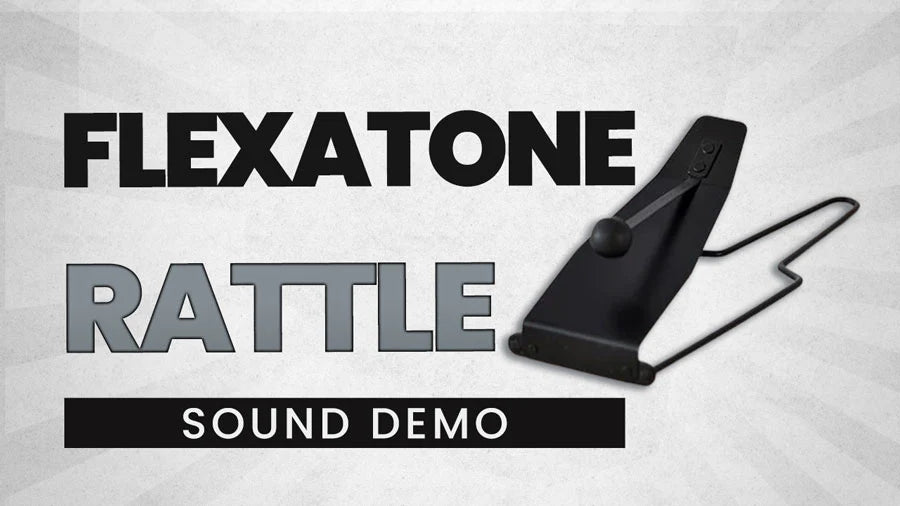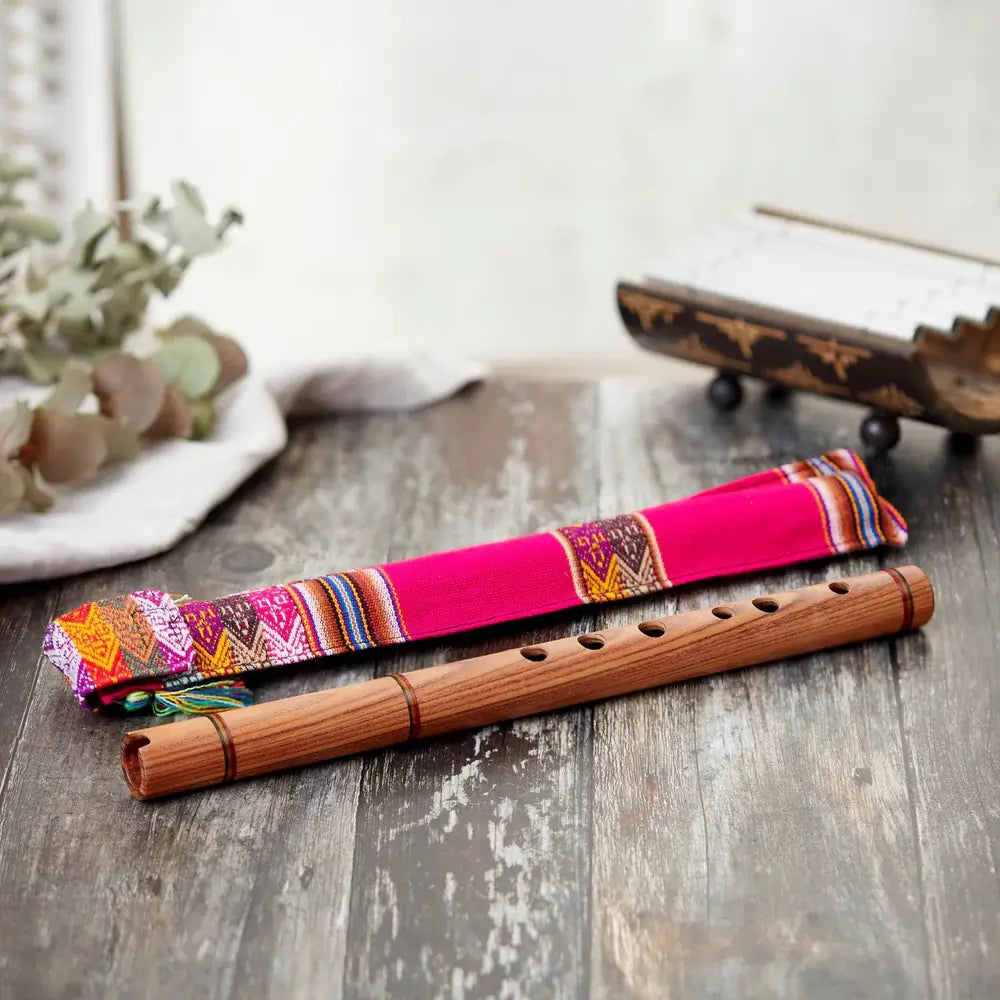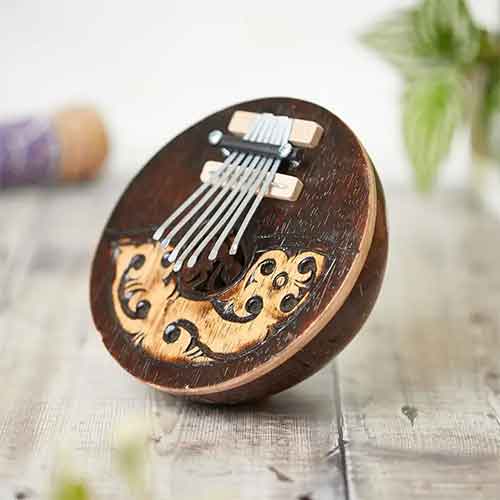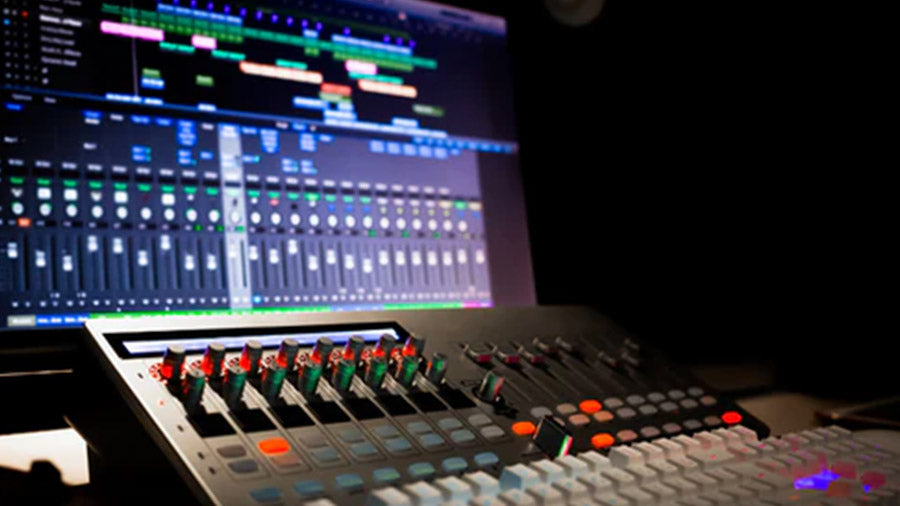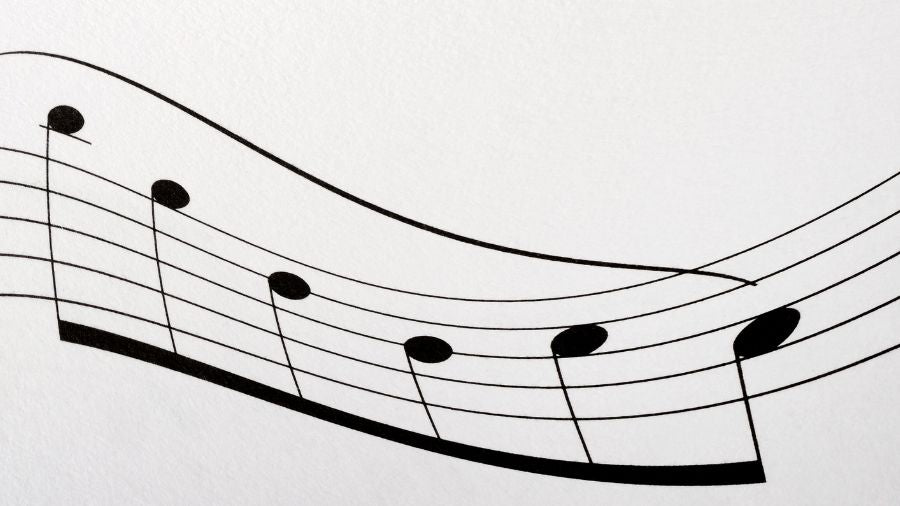The Flexatone Rattle is an essential instrument for percussionists seeking to expand their sound. It produces a unique pitch-bending sound that adds depth and character to any performance, making it perfect for cinematic music. This distinct effect is created when the balls at the ends of the sheet metal collide, making it perfect for cinematic compositions, especially in horror or suspense films where an eerie, metallic sound is desired. Modern artists and bands also use the Flexatone to bring an exotic, high-pitched effect to their percussion sections, adding a standout element to their music.
Flexatone Rattle Uses and Applications
The Flexatone Rattle is a versatile instrument with a range of uses beyond traditional music performance. It is widely employed in cinematic soundtracks, especially in horror and suspense genres, to produce unsettling and eerie effects. Modern musicians incorporate the Flexatone into music production to add unique, high-pitched sounds to their tracks, creating a unique touch to their percussion sections.
Its applications extend to education and therapy, where it helps teach pitch variation, stimulates auditory responses, and aids in focus and relaxation exercises. The Flexatone can also be a valuable tool in sound therapy to promote mindfulness and stress relief. In filmmaking and video production, it serves as an attention-grabbing sound effect, perfect for YouTube content creators looking for distinctive audio elements. Unconventional uses include using the high-pitched sounds to deter pests or enhance interactive learning experiences. Its adaptability makes the Flexatone an interesting and functional addition for a wide variety of creative and practical applications.
Top Song Compositions Featuring the Flexatone
GTA san Andreas Theme Song
The Flexatone plays a prominent role in the theme song of Grand Theft Auto: San Andreas, contributing a quirky sound that complements the games retro-feel soundtrack.
Peter Maxwell - Symphony No1 (1976)
Appearing in the third movement, the flexatone adds an unexpected metallic tone that create a sense of tension and intrigue. The use of the instrument adds a unique layer to the orchestra.
György Ligeti - Concerto for piano (1988)
Ligeti's work features the Flexatone in the second movement, where it creates brief, high-pitched, and otherworldly sound effects that blend seamlessly into the avant-garde piece.
Sofia Gubaidulina - the Canticle of the Sun (1998)
The Flexatone is played by the cellist, who bows the instrument before the final section. This technique generates a sound that enhances the mystical qualities of the composition.
Flexatone Sound Demonstration
To play the Flexatone, hold the instrument securely with both hands, ensuring a firm but relaxed grip. Shake it rhythmically to let the balls create the signature sound, and adjust the pitch by varying the pressure between your hands—tighter tension creates higher pitches. Tilting the instrument changes the resonance and timbre, allowing for different effects. Start with slow, controlled movements and gradually increase the speed as you become more confident.
Tips for Getting the Best Sound from Your Flexatone
Where to buy the Flexatone Rattle?

There are many things we love about the Flexatone Rattle, it's natural, it's eco-friendly, and hand crafted. This instrument produces a variety of high quality twinging sound effect, that may be used for cinematic purposes, amongst other uses. You can purchase the Flexatone Rattle here.
Flexatone - Frequently Asked Questions
How do you care for a Flexatone?
Keep your Flexatone clean and dry. Regularly inspect for wear or damage and avoid exposing it to excessive moisture to maintain sound quality.
What sound does a Flexatone make?
The Flexatone produces a unique pitch-bending sound, often described as a “boing boing” effect. This sound is created when the metal sheet vibrates as the balls collide.
How do you pronounce Flexatone?
Flexatone is pronounced “flex-a-tone.”
Who invented the Flexatone?
The Flexatone was invented by Percy R. W. J. L. Wild in the 1920s.
Which country did the Flexatone originate from?
The Flexatone originated in Germany.

